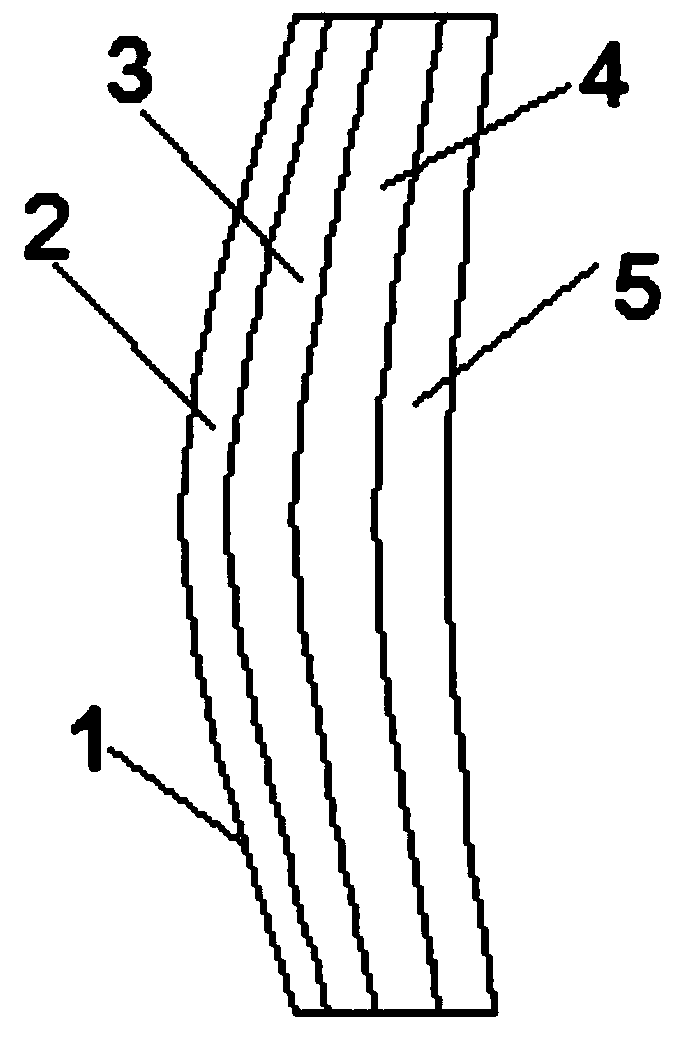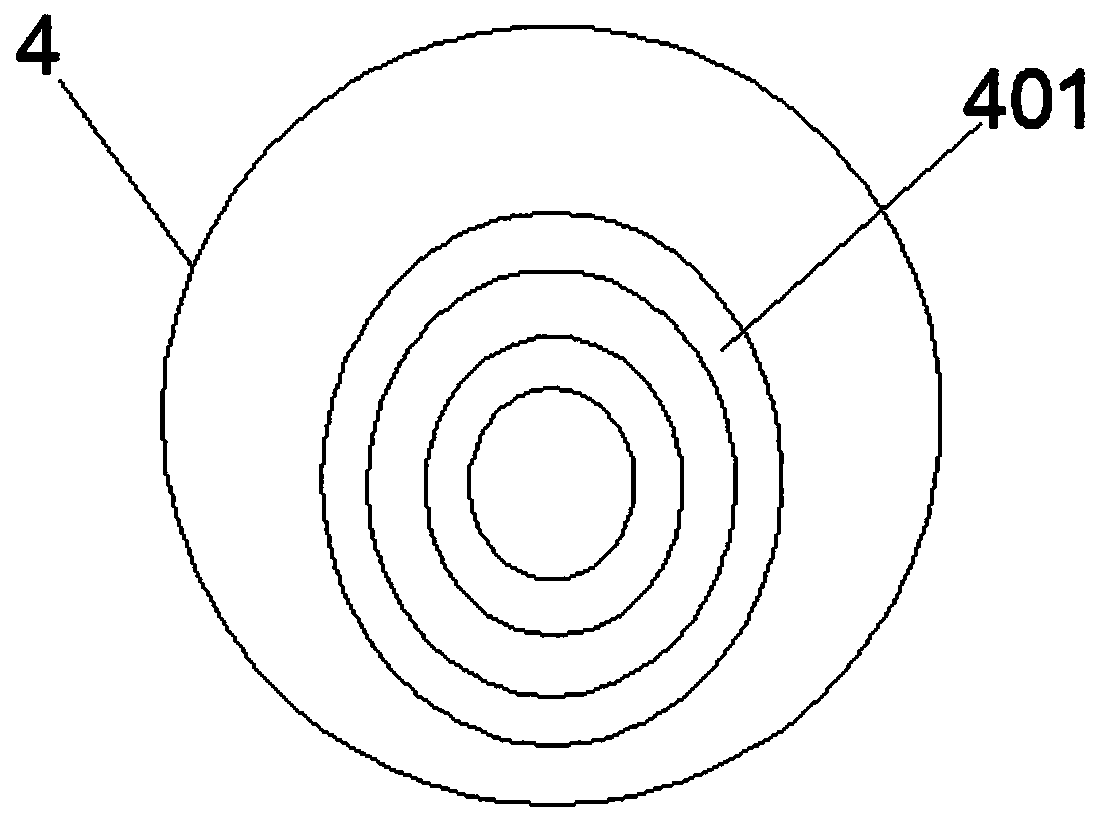Lens for correcting presbyopia
A presbyopia and lens technology, applied in the field of vision correction, can solve problems such as being unable to be used in daily life, unable to be used for a long time, and the adjustment area of a single lens is limited, so as to improve the correction effect, reduce the probability of being damaged, and improve the mechanical strength.
- Summary
- Abstract
- Description
- Claims
- Application Information
AI Technical Summary
Problems solved by technology
Method used
Image
Examples
Embodiment 1
[0036] Such as figure 1 As shown, a lens for correcting presbyopia includes a lens body 1. The lens body 1 has a four-layer structure, which is an antifouling layer 2, a first lens 3, a second lens 4, and a hardened layer 5, and the lens body 1 has two The ends are narrow and wide in the middle, bent toward the anti-fouling layer 2, the first lens 3 and the second lens 4 are located between the anti-fouling layer 2 and the hardened layer 5, and the first lens 3 is close to the anti-fouling layer 2, and inside the first lens 3 A first correction layer 301 composed of more than ten convex photosensitive spherical rings with decreasing circumference is provided, and the second lens 4 is provided with a second correction layer 401 composed of more than ten convex photosensitive spherical rings with decreasing circumference. The vertical projection of the convex photosensitive spherical ring above the track has the same center.
[0037] In use, the anti-fouling layer can reduce the ch...
Embodiment 2
[0039] Based on Example 1, such as Figure 2 to Figure 5 As shown, the curvature of the antifouling layer 2, the first lens 3, the second lens 4, and the hardened layer 5 decreases. The first corrective layer 301 and the second corrective layer 401 are composed of more than ten concentric ellipsoidal rings, and the first corrective layer 301 is located on the upper part of the first lens 3, and its center line passes through the center of the first lens 3. The layer 401 is located at the lower part of the second lens 4 and its center line passes through the center of the second lens 4. The vertical projections of the first correcting layer 301 and the second correcting layer 401 constitute the optical central area. The optical central area includes the optical distance zone 7 formed by the overlapping part of the vertical projections of the first correcting layer 301 and the second correcting layer 401. The upper near vision zone 8 formed by the non-overlapping part of the ver...
Embodiment 3
[0042] Based on Example 2, the optical center area is 6-8cm 2 , And the area ratio of the far vision zone 7, the upper vision near zone 8 and the lower vision near zone 9 is 4:1:1.
PUM
 Login to View More
Login to View More Abstract
Description
Claims
Application Information
 Login to View More
Login to View More - R&D
- Intellectual Property
- Life Sciences
- Materials
- Tech Scout
- Unparalleled Data Quality
- Higher Quality Content
- 60% Fewer Hallucinations
Browse by: Latest US Patents, China's latest patents, Technical Efficacy Thesaurus, Application Domain, Technology Topic, Popular Technical Reports.
© 2025 PatSnap. All rights reserved.Legal|Privacy policy|Modern Slavery Act Transparency Statement|Sitemap|About US| Contact US: help@patsnap.com



